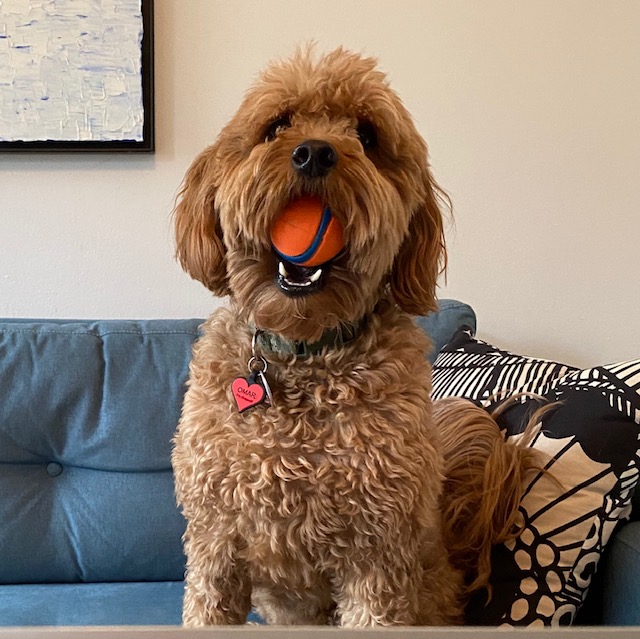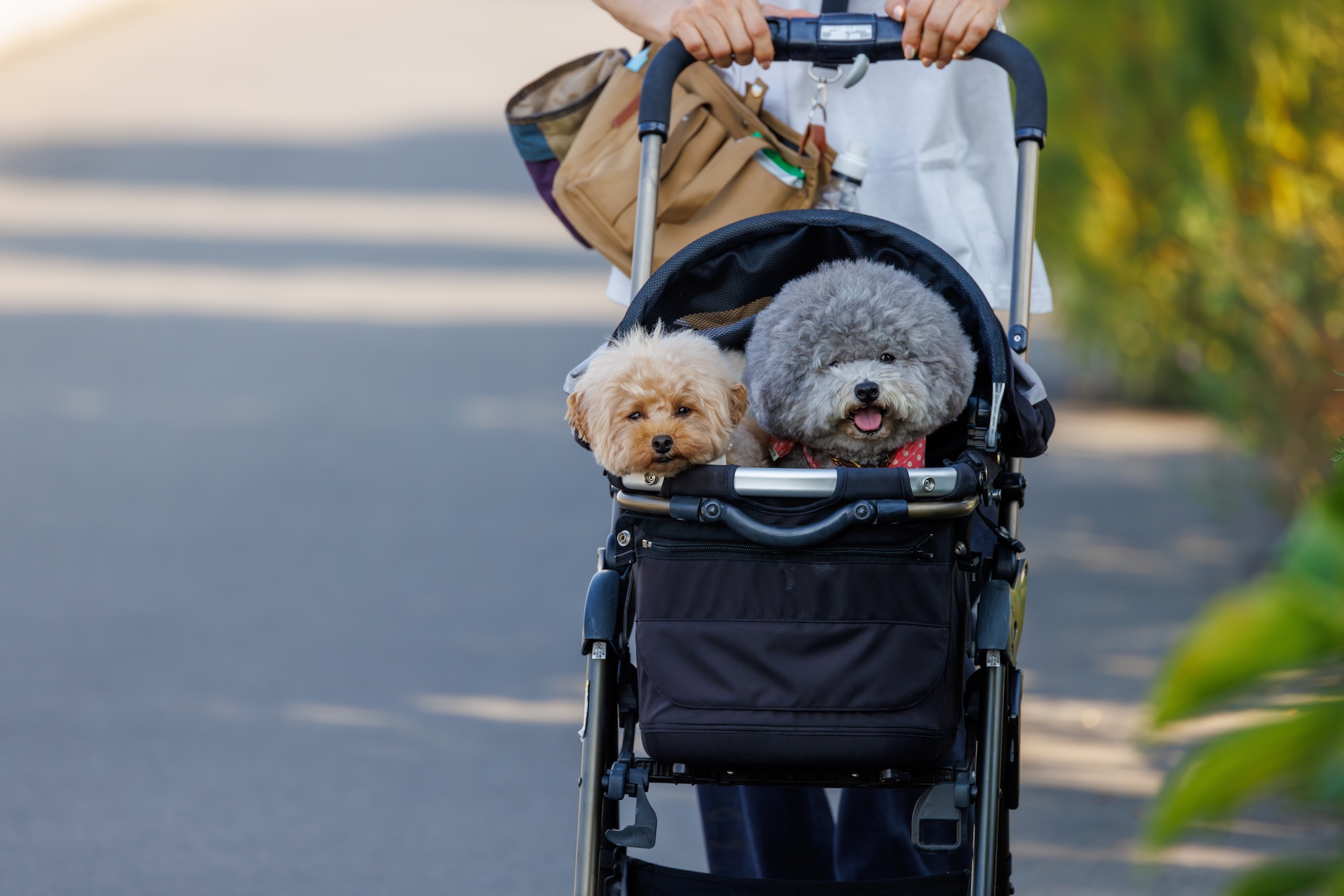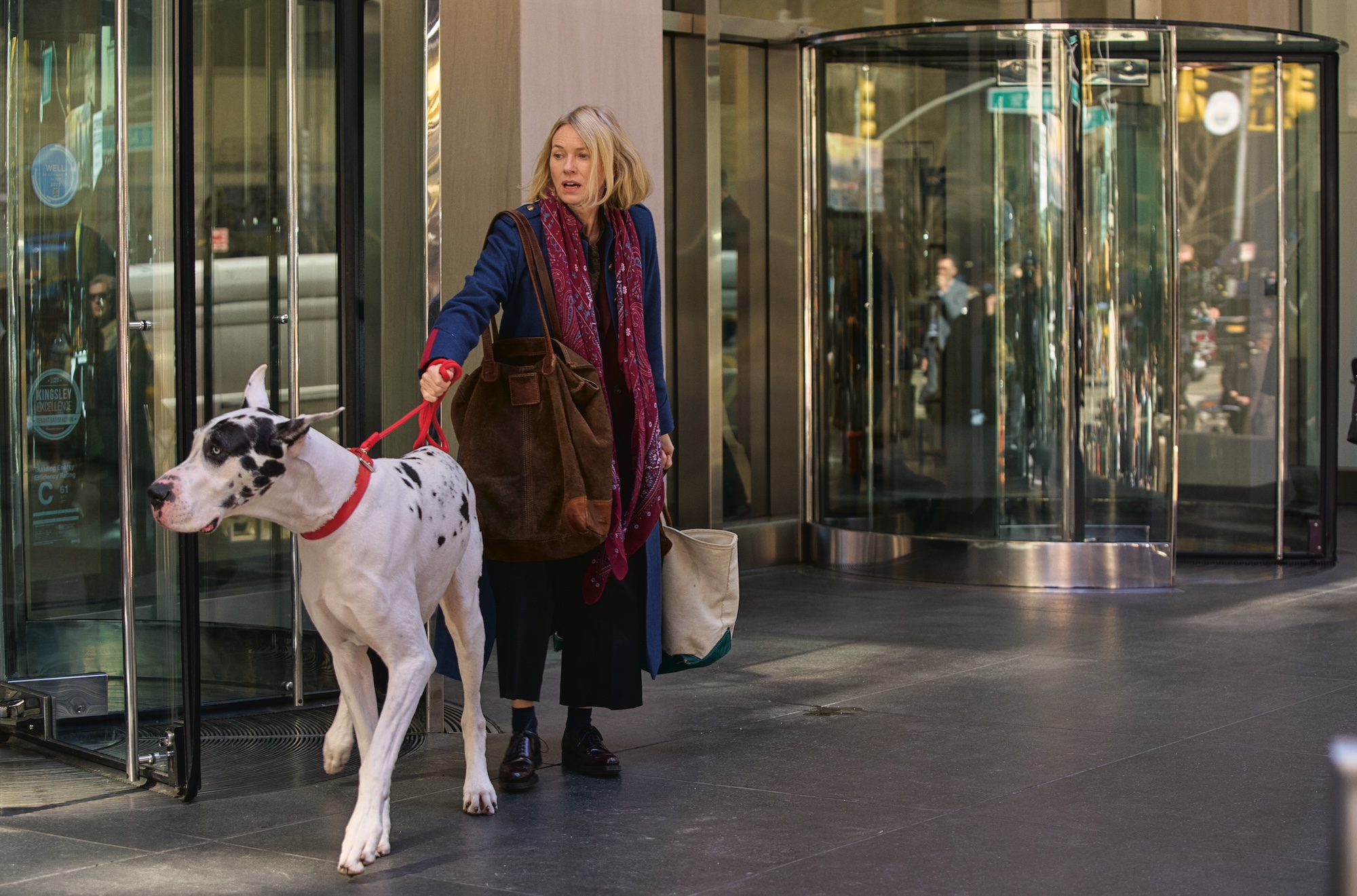I was the copywriter at a documentary production company in New York City when the COVID-19 pandemic sent us all scrambling out of the office and into work-at-home mode last March. My wife, Rosella, who edits films and television shows, was sent home to work the day after me. Soon enough, we had crammed two desks, two bulky office chairs, two iMacs, a monitor, and other gear into the living room of the tiny East Village apartment we share with our dog Omar, a 7-year-old goldendoodle, and his best friend, our cat Foxy, a 3-year-old calico.
We created what I like to call “a creative co-working space.” Rosella calls it “an overcrowded living room packed with people and animals.” I prefer my description.
Our being at home all day didn’t have much of an impact on Foxy’s daily routine. But Omar, who clearly prefers copywriting to editing documentaries, threw himself into my world of virtual work, joining me on the couch for our team’s Webex meetings every morning at 9:30 a.m. sharp. This was a big deal for a dog who likes to sleep in.
To his credit, Omar was mostly good about staying still during our meetings. He gazed in the direction of the laptop perched on the coffee table with his big brown eyes, never barked, and high-fived me to celebrate good news and achievements shared by my colleagues. Sometimes he wore a rainbow tie or a spiffy bandanna tied in a classic French knot. Once, he gently lapped water out of a dainty teacup to amuse a co-worker who had privately requested that he do so during a meeting. How could I not oblige?

I hadn’t planned on Omar attending these meetings all the time, but he kept showing up day after day like dogs do when they feel like they are needed. It was like it was his job to be there for me and my co-workers as we felt our way through the early days of the pandemic. My colleagues Slacked me after meetings to tell me they found Omar’s presence joyful and comforting. One of our interns made a company ID badge for Omar and included photos of him in a presentation she made about her internship for human resources.
We had a good thing going. Then our company shut down at the end of September.
I was out of a job that I loved, and so was Omar, who kept showing up for the meetings after they had stopped. He would hop up on the couch in the morning and sit in his spot. When I didn’t join him, he would paw at the coffee table where I used to place my laptop. He was frustrated. After a few days, he realized the morning meetings were over.
From cute to pushy…
I have much less of a routine than I had before, and Omar got needy and antsy. He is not above grabbing at Rosella’s arm while she is trying to edit, and he nudged a plant—a bird’s nest fern—off the coffee table with his nose once to get her attention. I saw him do it, and I have to say, it did get Rosella’s attention.
Without the morning ritual that got our day off to a productive start, Omar and I went into a tailspin. We got off track, and we needed help. So I reached out to a dog trainer for guidance.
“Please tell me I am not the only person who is experiencing challenges working at home with my dog as much as I love him,” I implored Blake Rodriguez, trainer and founder of Dream Come True K9 in New York City.
“Many people are struggling during this pandemic with pushy, anxious dogs,” Rodriguez says, reassuring me I am not alone.
So what should I do? Actually, what should Rosella and I do? As any dog trainer will tell you, everyone in a family needs to play a role in rectifying dog dilemmas. Here are the keys to keeping your WFH situation happy, and keeping your dog happy even when (if) you return to your office.
Don’t forget to move…
Exercise, exercise, exercise—we need to make sure Omar gets enough exercise. “The answer is to exercise the dog more and provide more of an outlet, or dog time that you can be included in so that when the time comes that you need to work and do something, your dog has been fulfilled,” Rodriguez says.
Sounds like common sense, but I need to be reminded of this because I have slipped into sedentary behavior now that I don’t have a set schedule.
I was actually better about walking Omar when I was working full-time. Just the other day, I spent two hours lying on the couch underneath a weighted blanket while staring at a unicorn balloon hanging from the ceiling.
The best thing to do is to create an exercise schedule, with the key word being schedule, made up of regular walks and trips to the dog park, running trail, or other dog-inclusive activity. The schedule gives me something to stick to, and Omar knows what to expect each day. “The dog is craving more structure and routine—an understanding of time and place, when and where,” Rodriguez stresses. “The more that you can be consistent with your routine, the more your dog will settle.”
Actually leave your house
Careful to mind public health guidelines, make sure you’re coming and going as much (or nearly as much) as you would normally, even if the trips outside are short. Rosella and I need to go out and do things without Omar. We haven’t been so good about that lately. She always has deadlines to meet, and I am lounging more than usual (see unicorn balloon). Being home with your dog all day, every day, creates a dependence that isn’t healthy for your dog and can lead to separation anxiety, Rodriguez says.
This is definitely a problem with Omar and, more recently, Foxy. On the rare times Rosella and I venture outdoors together, we come back home to find them both waiting at the door to greet us, acting like we’ve been gone for a month.
Never make a big deal about leaving when you do go out, Rodriguez coaches. There is no need to say goodbye to your dog, and when you go, leave your dog with a treat-filled puzzle toy that will keep them occupied, he advises (stick to healthy, single-ingredient goodies, like fresh vegetables and fruit if possible). The toy should be special—an item your dog only gains access to when you are out. Make sure you put it away when you return home. You can also play music to soothe your dog (read more about preventing separation anxiety here).

Maintain boundaries
And how do we stop Omar from pawing at Rosella while she is trying to work? “It’s very likely that the human that gets nagged the most is the one who cuddles with, plays with them the most, and gives the most unearned affection with a lack of rules,” Rodriguez says. (He is right. Omar loves me, but his love for Rosella burns brighter because he spent most of his time bonding with her when he was a puppy). “The best thing to do is make sure that kind of behavior from the dog isn’t met with play, positive attention or anything that the dog can perceive as rewarding.”
If we don’t want Omar clinging to Rosella while she is working, we can do what’s called “go to place training,” which teaches a dog to be okay with separation, Rodriguez explains. For example, we can place a dog bed in our living room and use treats to train Omar to go to his bed and chill there while Rosella works nearby. Omar gets to be near her without invading her personal space.
Fast forward to a month after my consultation with Rodriguez. We’ve been practicing these techniques with Omar and have already started seeing a difference in his behavior.
I know eventually Omar and I will have morning meetings to attend again. For now, our schedule of walking and training time is providing an outlet for Omar’s appetite for working. And we’re lucky we can all ride out the pandemic together as a family—me, Rosella, Omar, Foxy, and the unicorn balloon—in our creative co-working space.




